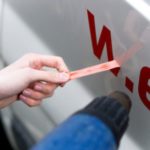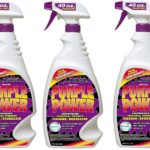Quick Navigation
There are various factors that lead to car paint cracking. Some of the reasons are owner-caused, while some are somewhat unpreventable.

So, let’s see why your car paint is cracking and how you can fix it before it becomes worse.
6 Causes Of Stress Cracks In Car Paint
1. Excess Or Improper Use Of Paint Hardener
A paint hardener reduces the paint’s curing period and should be mixed in a specific ratio. When you put too much, the color will dry excessively.
Thus, cracks will form after exposure to the sun or anything that will heat the paint surface.
You should also note that some paints do not require a hardener. Adding a hardener will only make the paint crack.
To avoid using excessive hardener or improper paint hardener, check the user manual that comes with the hardener. Check if you are supposed to use a paint hardener with the paint you are using.
2. Old Age
As your car ages, components wear out, but the paint also wears out even if it is not mechanical. There are care and maintenance procedures for automotive paint.
You’ll find cars with original paint even at over 50 years old while still being daily driven.
You do not necessarily have to coat the paint or wrap it to prevent cracking. Simple care only involves avoiding parking your car in the sun, cold, or a moist place for too long.
Driving carefully to avoid scratches that could expand to cracks is also one way to prevent cracks on your paint.
3. Uneven Paint Mixture
Most paints will require you to mix with a thinner, and when you use less or more than the necessary amount of thinner, the paint will become brittle. Brittle paint will crack even after a short exposure to the sun.
However, not all paints require thinner, and if you mix it with thinner, you have completely ruined the paint. Ensure that you read the user instructions carefully on the thinner and the paint.
4. The Less Flash-Off Time Between Coats
Flash-off time is the time required for one layer of coat to dry. There is a required amount of time for every coating to dry.
When painting, most people will move on to the subsequent coating. It is due to impatience or assumptions that the paint is dry due to its appearance.
Depending on the instructions, you should wait approximately 10 to 30 minutes for each clear coating. Each type of paint has its own flash-off time.
5. Exposure To High Or Low Temperatures And Moisture
When exposed to high or cold temperatures, paint becomes brittle and cracks. UV rays from the sun are not automotive paint’s best friends.
But it does not take one hour to park in the sun for the paint to crack. Most car paints have a UV protective solution mixed into them.
However, it wears out as you often park your car in the sun.
When it’s cold, snow and ice will form on the paint surface. Both contain salts that lead to painting cracking.
During the winter or in areas that experience cold winter weather, it tends to rain hard ice. Hard ice causes cracks and chips on the paint.

The paint will crack if you often leave your car in an area exposed to moisture, whether it is in a damp garage or the rain.
Ensure that you park your car in the shade or an enclosed parking space free from environmental factors. Coating or wrapping your vehicle with a protective film also helps.
6. Expansion Of Existing Cracks Or Dents
Existing dents or cracks will expand over time due to exposure to environmental factors.
Sunlight will heat the coatings underneath the paint, thus expanding the crack. You might not notice it at first, but if the crack extends between body lines, you’ll see it.
Or someone else will notice it, maybe a frequent passenger.
Water expands as it freezes. If there is water on the cracks freezing to ice, the crack will expand as the ice expands.
You cannot just paint over cracks as they continue to expand beneath the paint. It will lead to more expensive re-sprays and sometimes even rust when the cracks reach the bare metal beneath the paint.
How To Repair Cracks On Car Paint
There are three main methods that you can use to repair cracks on your car’s paint.
1. Repainting The Whole Car
If there are many large cracks on your car’s paint, you have to get it re-sprayed fully. It might take a while as your car must be sanded to remove the old paint altogether.
The procedure is done at an automotive repair shop. It might take longer if the paint code you want is unavailable or there is a waiting list of cars scheduled awaiting painting.
You can use the following methods to repair the cracks while at home. But only if the cracks are not that intense or less affecting one or two parts of your vehicle.
2. Repainting Where The Cracks Have Formed
It is the best method you can use to repair cracked paint. It will take some time, but it’s worth it.
The following are all the steps you should follow.
- Clean the affected area using soapy water with a degreaser and a lint cloth.
- Mark out the area around the crack, then sand with coarse sandpaper moving up to a finer one. Brush off the dust, then rinse the area with clean water.
- Once the area has dried, apply a single primer coating. Then let it dry according to the user instructions of the primer you are using.
- Sand the primer coating with medium-grit sandpaper to smoothen it, making it ready to paint.
- Tape the surface around the area you are painting even when spraying a similar color.
- When painting, put your hand at least 12 inches away from the surface. Do not spray twice when you move your hand in one direction.
- Let the paint dry before applying the next layer of paint. Paint until the area you are painting is similar to the surrounding areas.
3. Using A Paint Pen
Using a paint pen is great if you want an easy way out. Get a paint pen that has a similar color code to your car’s paint.
Clean the cracked area with soapy water with a degreaser. Then gently “draw” on the crack using the color pen.
Conclusion
No car owner likes stress cracks on their car’s paint. Cracks make the cosmetic appearance of your vehicle poor.
They also reduce your car’s resale value regardless of the size of the crack. To get rid of them, you can try one of our proposed methods.

With comprehensive experience in writing exceptional quality articles and blogs about cars and related stuff, Daniel is one of the finest bloggers and a hardcore car lover we have. He is an ASE certified technician with an across-the-board experience of 10 years in the industry. He could not help tinkering with anything he got his hands on from a young age, which led to his remarkable career in the automotive repair industry.
When he is not under any hood, you can find him on the water or in the woods to pursue his passion for hunting and fishing. He has been writing for multiple sectors and is a regular contributor to several publications.
He currently owns a Nissan 300ZX TT and a Pearl Yellow but plans to upgrade it to 550 HP. His favorites include the Koenigsegg CCX and Lamborghini Diablo 6.0 VT, but for him, the Ferrari 360 Spider is one of the sexiest cars that exists to date.
Being an avid world traveler, he has spent most of his time analyzing the automotive markets, latest technology, and local favorites to enhance his knowledge base. He is currently living in North Caroline, where it’s all about food and coffee and, of course, cars.






